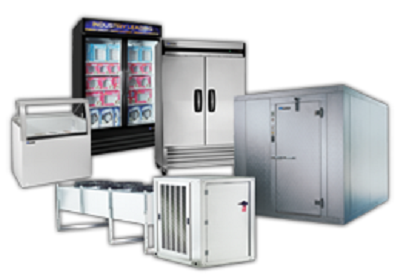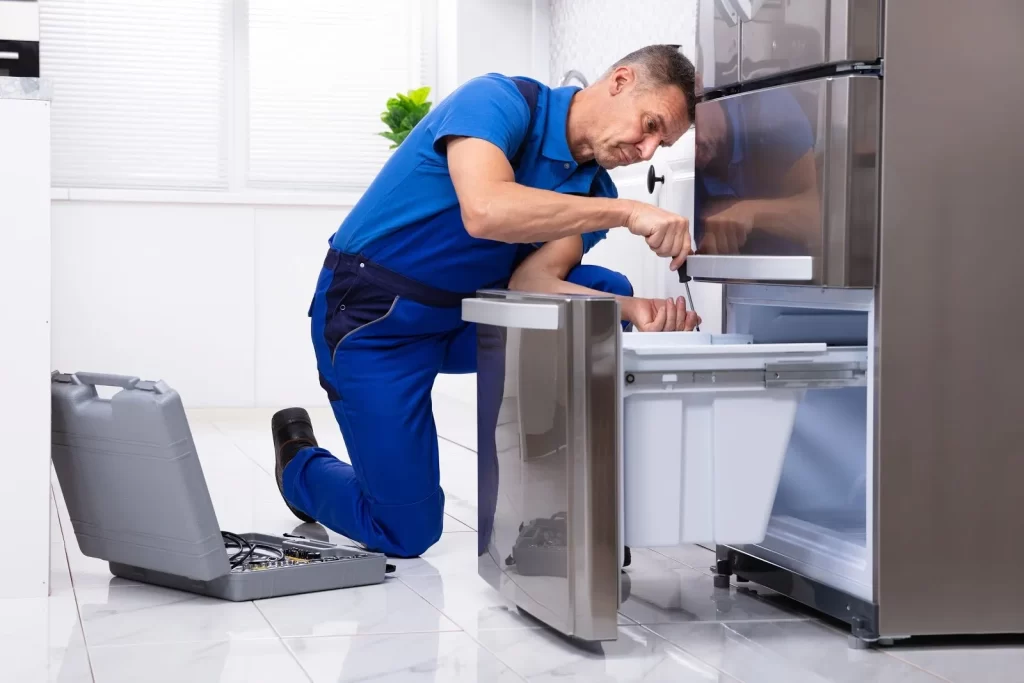Simple Habits to Make Your Freezer Last Longer with Help from Dependable Appliance For SubZero Freezer Repair
Simple Habits to Make Your Freezer Last Longer with Help from Dependable Appliance For SubZero Freezer Repair
Blog Article
The Ultimate Guide to DIY Device Repair Service Techniques
From refrigerators to dish washers, recognizing how to fix and fix these gadgets can conserve you time and money. Are you prepared to find vital methods that will equip you to deal with repair services confidently?
Comprehending Common Appliance Problems
When you depend on your home appliances, it can be discouraging when they instantly stop functioning or act up. Recognizing common device issues can help you repair problems effectively.
If your stove isn't heating, damaged aspects or thermostat issues can be to blame. Dishwashers usually experience issues with water drainage, so ensure the filter is tidy and the drain tube isn't kinked.
Also, pay attention for unusual noises; they often suggest mechanical issues. By acknowledging these indicators, you can save time and possibly avoid expensive fixings. A little knowledge goes a lengthy means in preserving your devices, so stay notified to maintain everything running smoothly.
Necessary Tools for DIY Fixes
Prior to diving into DIY device repairs, it is necessary to collect the right tools to guarantee the process goes smoothly. Begin with an excellent set of screwdrivers, including both flathead and Phillips, as they're crucial for opening most devices. You'll also want a pair of pliers for grasping and turning cords or small components.
Don't fail to remember a multimeter; it assists you examination electric parts and diagnose problems successfully. An outlet collection is convenient for loosening or tightening bolts, while an utility knife can be useful for cutting cables or opening packaging.
Finally, consider having a flashlight on hand to light up dark rooms inside your devices. With these important tools, you'll be well-equipped to tackle numerous repairs, conserving both money and time. Collect your gear and get ready to roll up your sleeves!
Safety First: Precautions to Take
Before you begin any kind of device fixing, it's necessary to prioritize safety and security. Make sure you use personal protective equipment, separate the source of power, and keep your workplace arranged. These straightforward safety measures can assist avoid accidents and guarantee a smoother fixing procedure.

Individual Safety Tools
Security gear is an important part of any type of DIY device repair service job. Steel-toed boots are additionally a smart choice, specifically when lifting hefty home appliances. Remember, being prepared with the ideal gear maintains you safe and concentrated on completing your fixing effectively.
Source Of Power Disconnection
To guarantee a risk-free do it yourself home appliance fixing, detaching the source of power is important. Prior to you start any kind of work, you must turn or unplug the device off the circuit breaker. This basic step avoids electrical shocks and guarantees that you can concentrate on the fixing without bothering with accidental activation. Always ascertain that the appliance is off by checking it with a voltage tester. If you're dealing with larger devices, like a washing machine or dryer, see to it to safeguard the power cable and avoid any type of call with water. Keep in mind, safety and security! As soon as you're confident that the power is detached, you can confidently wage your fixings, knowing you've taken the essential precautions to protect yourself.
Workplace Organization
An efficient work location can make all the distinction in your DIY device repair service project. Begin by clearing your office of clutter to stop distractions and mishaps. A tidy area not just boosts performance but likewise maintains you safe while you function on your appliance repair work.
Step-by-Step Overview for Refrigerator Fixes
When your fridge begins acting up, it can be frustrating, yet tackling the trouble on your own can conserve you time and cash. Inspect for typical issues like temperature level fluctuations or unusual sounds. For a loud refrigerator, inspect the fan and confirm it's not obstructed.
If there's water pooling within, check the door seals for damage or dust, and clean them if required. Once you have actually dealt with the issue, connect the fridge back in and check it for a few hours.
Fixing Cleaning Device Issues
Similar to refrigerators, cleaning makers can see this site present their own collection of obstacles, but lots of issues can be fixed with a little bit of troubleshooting. Initially, if your maker will not start, check the power cable and verify it's plugged in. Next, check the door latch; a damaged latch can stop the cycle from starting. It might be due to foreign objects stuck in the drum or the drain pump. if you discover unusual noises during operation.
If your clothes aren't getting clean, consider the water degree and cleaning agent kind; utilizing as well much detergent can create excess suds, affecting performance. For leakages, check out the tubes for splits or loosened connections. Tightening these can frequently solve the trouble. Normal maintenance, like cleaning the filter, can prevent many concerns from developing. Keep in mind, a little troubleshooting goes a long way in maintaining your cleaning device running smoothly.
Troubleshooting Ranges and stoves
Exactly how can you troubleshoot usual problems with your stove or oven? Start by examining the power supply. Make sure it's connected in and the circuit breaker is not tripped. If it's a gas oven, verify the gas shutoff is open. Next off, test the heaters: if they don't stir up, clean the igniter and look for clogs in the heater ports.
If your stove isn't heating, check the temperature settings and validate the door seals tightly. If it's harmed., a defective home heating component could likewise be the culprit; you might require to change it.
For uneven cooking, turn your frying pans and consider utilizing a stove thermostat to verify precise temperature levels. Finally, if you hear unusual noises or scent gas, transform off the appliance promptly and speak with an expert. By following these steps, you can determine and solve several usual stove and stove issues successfully.
Fixing Dishwashers Made Easy
When your dishwasher starts discover this acting up, it can be frustrating, but dealing with typical problems isn't as difficult as it seems. You'll discover step-by-step troubleshooting techniques that will certainly assist you identify the issue, along with the vital tools you'll need to tackle repairs yourself. Allow's make repairing your dish washer a wind!
Typical Dishwashing Machine Problems
While dish washers are developed to make your life much easier, they can sometimes run into typical problems that leave you really feeling discouraged. If your dishwasher's door won't latch, it might be a basic concern with the lock mechanism or door seal. Addressing these problems early can save you time and headache down the roadway.

Detailed Troubleshooting
Prior to diving into repair services, it's crucial to determine the certain concern your dishwashing machine is dealing with. If your dishwashing machine won't start, check the power supply and door lock. By carefully resolving each prospective problem, you can identify the problem and take the necessary actions to repair it, making your dishwashing machine function like new once more.
Crucial Fixing Devices
Having the right tools at your disposal can make all the distinction when repairing your dish washer. Don't neglect a bucket or towels for any type of water spills throughout repair services.
You might likewise desire a degree to guarantee your dishwashing machine's effectively aligned. With these vital devices, you'll be well-appointed to tackle any type of dish washer fixing challenge that comes your method.
Often Asked Inquiries
How Do I Identify if a Home Appliance Is Well Worth Fixing?
To figure out if a device's worth fixing, consider its age, repair costs, and present value. If repair services go beyond half the substitute price, you might wish to purchase a new model instead.
Can I Find Substitute Parts Locally for My Appliance?
Yes, you can often locate substitute parts locally for your device. Inspect equipment stores, appliance fixing shops, or local classifieds. Do not fail to remember to bring the model number to visite site assure you obtain the appropriate part!
What Usual Mistakes Should I Prevent When Repairing Devices?
When repairing devices, prevent rushing with diagnostics, disregarding safety preventative measures, or using wrong tools. Do not avoid reading handbooks or watching tutorials; they give vital guidance. Be person and complete to guarantee effective repairs and stop further damages.
How Lengthy Does a Typical Do It Yourself Device Repair Service Take?
A typical DIY device repair work generally takes one to three hours, depending upon the intricacy. You'll intend to collect your materials and devices first, and comply with instructions meticulously to avoid unneeded delays.
Exist Any Service Warranties for DIY Appliance Fixes?
When you deal with do it yourself home appliance fixings, warranties normally do not cover your work. Some makers could recognize service warranties for parts you replace. Always check your home appliance's guarantee terms prior to beginning any kind of fixings to avoid issues.
Before diving into DIY appliance repair work, it's essential to gather the right tools to ensure the process goes smoothly.Before you start any appliance repair work, it's vital to prioritize security.To ensure a risk-free DIY appliance repair, disconnecting the power resource is essential.An efficient job location can make all the difference in your DIY appliance repair task. Constantly examine your device's guarantee terms before starting any kind of fixings to prevent problems.
Report this page